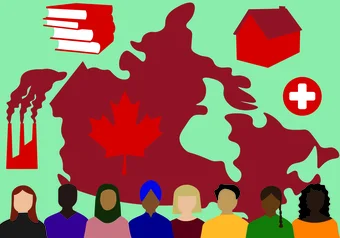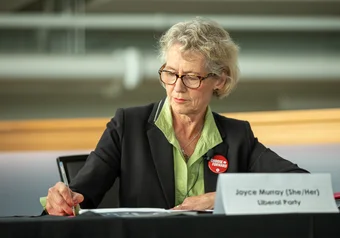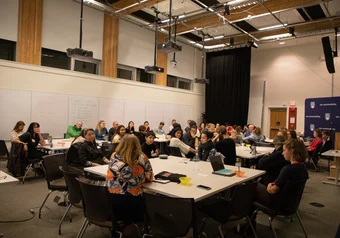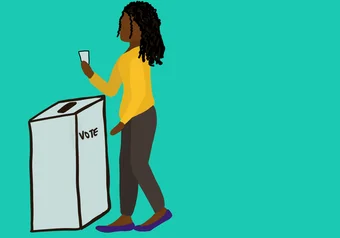Canadian voters will head to the polls on October 21 to elect the forty-third Canadian Parliament. This is what the four main parties have promised so far on making post-secondary education more affordable.
Liberals:
Beginning this current school year, the Liberals enforced a six-month grace period for student loans after a student graduates or if the student is taking time off school or reducing their full-time studies to part-time.
For the federal election campaign, the Liberal party has a platform to increase Canada Student Grants to give students up to $1,200 more a year. As well, they have promised to extend the current grace period for post-graduation student loans from six months to two years, while “changing the rules” so that graduates wouldn’t have to start paying their student loans until they make at least $35,000. This is an increase from the current benchmark of $25,000.
Conservatives:
On top of the existing federal grants for low and middle-income families, the Conservatives have promised to increase the federal government’s contributions to the Registered Education Savings Plan (RESP). The government’s contribution would increase from 20 to 30 per cent for every dollar invested in the savings program, up to $2,500 a year. Increasing the federal government’s funding to RESP is intended to help parents to save up and send their children to college or university.
New Democrats:
The New Democratic Party (NDP) platform aims to provide equal access to post-secondary education by working with provinces and territories to reduce and put a cap on tuitions, ultimately making it part of Canada’s public education system. They have promised to eliminate interest rates on student loans and later moving away from loans altogether by increasing funding to Canada Student Grants.
Greens:
The Green Party has a platform that promises to reduce post-secondary tuition. Unlike the NDP, the Greens have promised to forgive all existing federal student debt, while axing RESP entirely, keeping in mind their overall goal of making post-secondary education free for all Canadians. The Green Party has also promised to eliminate the two per cent cap on education funding for Indigenous post-secondary students.
Analysis:
The province of British Columbia offers Canada-BC integrated student loans, which streamlines the service into a single, joint loan agreement. This means cuts to student loans and cuts to interest rates on those loans implemented by the federal government only applies to the federal portion of a student’s loan.
As of February 2019, BC has already eliminated the provincial portion of student loan interest.
Grants are separated under federal and provincial jurisdictions. This means additional federal government funding to Canada Student Grants will increase financial support for students, but it will have no effect on provincially and privately allocated grants.
Besides loans and grants, the Canadian government also offers scholarships and other programs for financial assistance. Notably, the government contributes a certain amount to the Registered Education Savings Plan (RESP), where parents save tax-free funds for their children’s post-secondary education.
The Conservatives' plan to increase the federal government's contributions to RESPs would go into effect in 2022. The Parliamentary Budget Office (PBO) assessed that the plan will cost $600 million every year in lost revenue.
Additionally, CBC reported that a 2017 report by Statistics Canada, also found that families with children under 18 in the higher income quintiles had higher RESP holding rates and higher average dollar amounts.
Besides, RESPs, loans and grants, what the federal government does not have control over is tuition fees. Those are determined by each university or college according to provincial regulations.
Dr. Kevin Milligan, a professor at the Vancouver School of Economics, said the NDP and Green Party’s promises to reduce or eliminate tuition fees don’t make much sense because the federal government has no control over them.
“I don’t see why that’s on a federal party platform,” he said. “A place where the federal government does have some say is things like grants and so I think that’s a much more effective way for any party to go.”
On the NDP and Green Party’s promises to eliminate student debt, Milligan said he would prefer more forward-looking measures for helping students.
“On student loan interests, that’s something that benefits those who were in school in the past; who already have jobs … So, if you excuse interest on loans, some guy who’s 35 years old and has a good job is all of a sudden going to be excused from interest on his loans. That doesn’t help Canadian students — money spent on some guy who went to school 10 years ago,” he said.
“So, what I’m saying is, I would prefer to have resources focused on tomorrow’s and today’s students rather than yesterday’s students.”
Milligan added that extending the grace period — which is on the Liberal Party platform — for student loans will help people just out of school.
“A lot of people have difficulties with the transition from school into finding a good path into a career and extending the grace period seems like it would help out those folks,” he said, noting that grants are also a great way of allocating funding to students.
“They get [the grants] upfront, rather than backhanded through the tax system. It can be very much targeted at students who are more in need, which is a really important way of doing it because other ways are much less effective.”
According to Milligan tuition cuts and student loans can make education more affordable, but are less efficient than upfront grants.
“Tuition reductions go equally to everyone whether they are from a high-income, middle-income or low-income family. The grants … allow you to target your resources at families who are more likely to need it,” Milligan said.
Dr. Michelle Stack, an associate professor in the department of educational studies, similarly noted that there should be a focus on equity when it comes to education affordability policies.
Referring to the Green Party’s ultimate goal of making post-secondary education free for all Canadians, Stack is not opposed to having free tuition but said there still needs to be grants to assist students with living expenses.
“I think free tuition is great if the tax system is changed so you don’t have a situation where people that already have a lot, get more and people that have very little don’t really end up too much better off. Because maybe they get free tuition and that’s great, but it doesn’t mean that it’s an equal competition in that they’re still having to work to pay their rent and their living costs, etc,” Stack said.
“I think it’s just a matter of making sure we don’t have a system where everybody gets free tuition but you still have students that are poor and that are working full time, who don’t have access to low interest or to grants.
“So, I guess what I’m saying is, it’s not the panacea just to say free tuition.”
First online
Share this article






